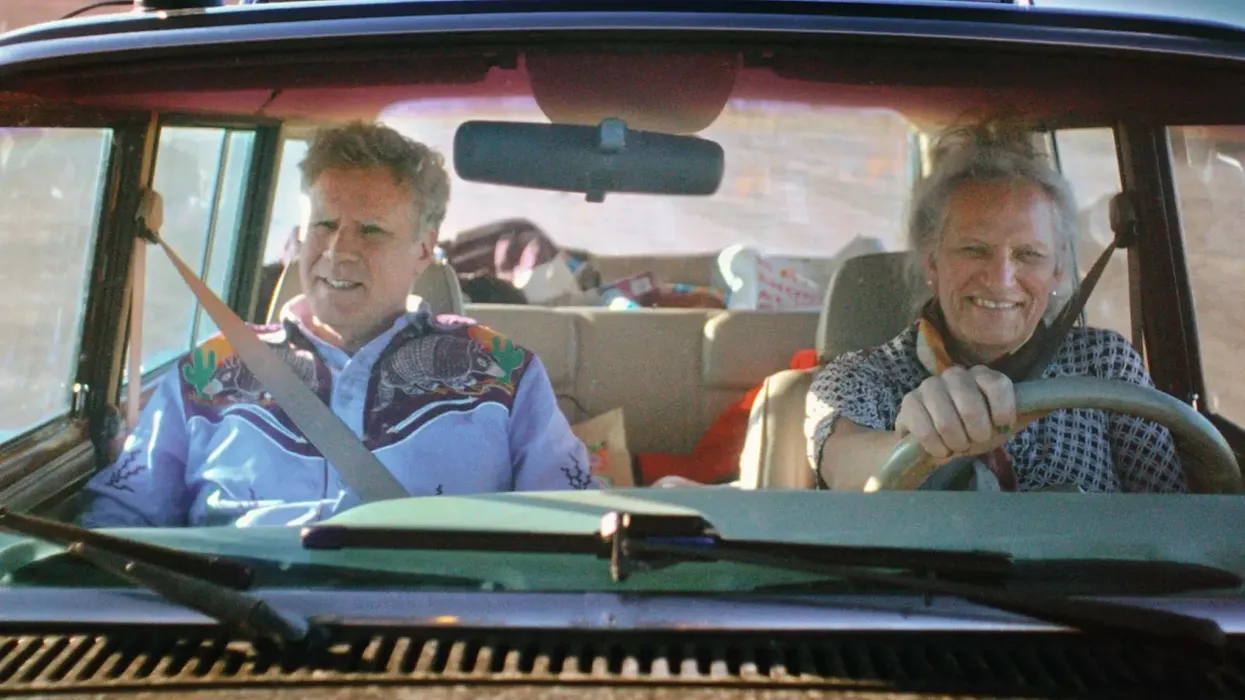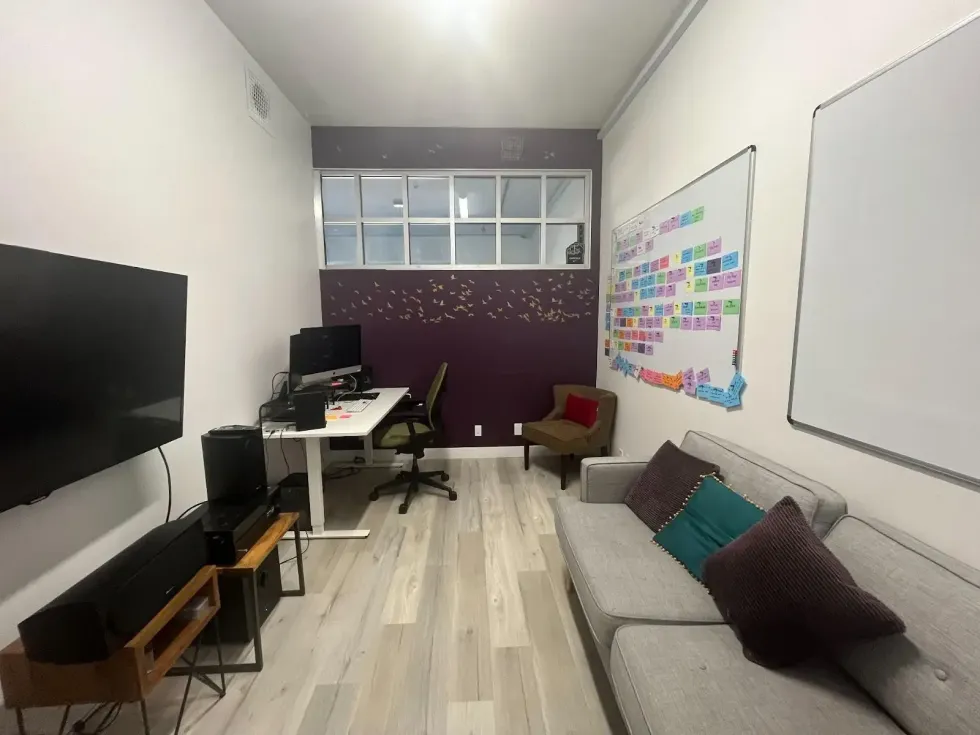The Editing Behind “Will & Harper” Using Premiere Pro and Frame.io
“Will & Harper”, which premiered at Sundance Film Festival this year and is slated for release on Netflix, tells the emotional story about the power of friendship and acceptance.

“Will & Harper”
This post was written by Meagan Keane and originally appeared on the Adobe Blog on February 8th, 2024.
When Will Ferrell finds out his close friend of 30 years is coming out as a trans woman, the two decide to embark on a cross-country road trip to process this new stage of their relationship in an intimate portrait of friendship, transition, and America.
We spoke with editor Monique Zavistovski, ACE, to discuss her decision to edit the documentary using Adobe Premiere Pro featuring Productions, a choice driven by the complex editing process. This was her first time using the feature, which she mentioned was a “lifesaver” for organizing footage.
Because the extensive footage included endless hours of car conversations, Premiere Pro’s Transcription feature was also an invaluable tool for Zavistovski, allowing her to efficiently generate transcripts from within the project and use them immediately, which saved her significant time.
Additionally, Zavistovski and her editing team relied on Frame.io from the production stage through post-production, using it to review dailies collaboratively, share scenes, and address feedback in real time.
Read on below for further details on the editing workflow, and be sure to keep an eye out for updates regarding the Netflix release date.
How and where did you first learn to edit?
The cramped offices of WHYY-91 FM public radio in Philadelphia are where I made my first edit 25 years ago on 1/4” audio tape. My first picture edits were on Super 8 and 16mm film at a time when edit bays were still populated by Steenbecks and upright Moviolas. After my first year at USC grad school, non-linear editing systems had begun to make a case for themselves — not without some grumbling from a few editors, I recall. For me it was a very exciting time to be an emerging editor.
How do you begin a project/set up your workspace?
I like to think of setting up a project as a game of Tetris. I conceive of the footage as color-coded blocks of media that need to be arranged in ways that are easy to navigate and manipulate, and that are very satisfyingly organized. There are different configurations those blocks can take, but I try to envision configurations that will work best in the long term, considering the complexities of each story I’m cutting. I avoid overly cluttered and chaotic workspace configurations at all costs and I love it when my workspace looks pretty.
Tell us about a favorite scene or moment from this project and why it stands out to you.
“Will & Harper” is an emotional ride that hits me differently every time I watch. After having watched it a thousand times I continue to discover favorite moments. It’s impossible for me to identify a singular favorite scene. But one that comes to mind is the Trona, California scene. It’s the second-to-last day of the road trip and we journey to what Harper describes as, “a small hidden house away from the world… miles from anyone.” The house plays a pivotal role in Harper’s transition, and it’s a place where she’d been sheltering certain feelings for many years that were difficult to confront. The emotional arc of the scene is one that deeply resonates with me and one that my amazing director, Josh Greenbaum, and I spent a lot of time on in the edit.
What were some specific post-production challenges you faced that were unique to your project? How did you go about solving them?
My biggest challenge in the edit was that I had an embarrassment of riches. I was warned by the production crew that most of the footage was fantastic and they were right. Will and Harper had deep, revelatory conversations for two weeks straight — they cracked a million hilarious jokes, horsed around, took a lot of risks, and moved me to tears time and time again. Sifting through over 200 hours of footage to find the core story of friendship and transition was difficult and time-consuming. My editing team (led by Hunter Hill and Kevin Otte) had to be extremely organized in Premiere Pro to manage all that wonderful footage and, importantly, to make sure none of the hidden gems were lost. We sorted it by days, locations, themes, conversations, running jokes, and multiple other categories, while simultaneously relying on an encyclopedic, color-coded spreadsheet that detailed all the priceless moments we might otherwise have missed. None of the 200+ hours of footage were taken for granted.
What Adobe tools did you use on this project and why did you originally choose them? Were there any other third party tools that helped enhance your workflow?
We decided to use Adobe Premiere Pro’s Productions feature because we had such a complex workflow. It was the first time I had used Productions and it was a lifesaver to be able to organize the footage into shareable, smaller projects that Hunter and I could quickly pass back and forth. Because a lot of our footage was endless hours of car conversations, Premiere’s Transcription feature was also a key component of our workflow. The ability to generate transcripts from within the project and utilize them immediately shaved weeks off our timeline.
Do you use Frame.io as part of your workflow? If so, how do you use it?
We leaned heavily on Frame.io from the production stage (to view dailies that our beloved DIT, B Kelley, delivered from the road), through the many months of editing (to share scenes in progress and be able to address notes quickly), and through finishing (as a way to compile notes and QC graphics, music, sound and color).
If you could share one tip about Premiere Pro, what would it be?
I shamelessly exploit Premiere Pro’s color labels. Color-coding sequences and media is a joy for me and is a helpful visual shorthand among the post team. We all knew, for example, that sequences that were forest were the ones to be exported, while the yellow ones were to be avoided.
Who is your creative inspiration and why?
I feel like I’m standing on the shoulders of giants having had Kate Amend, ACE, Jonathan Oppenheim, Thomas G. Miller, ACE, and Will Znidaric, ACE, as mentors, among others. If I could shout their names from my rooftop I would (it’s not really safe to go up there). I hold their creative lessons and life lessons close to my heart as I undertake each new project and they’re often responsible for rescuing me when I have editor’s block or am in a rut.
What’s the toughest thing you’ve had to face in your career and how did you overcome it? What advice do you have for aspiring filmmakers or content creators?
Editing my first documentary series (“They Call Me Magic”, a four-part series about the legendary Earvin “Magic” Johnson) during a global pandemic was uniquely challenging and stressful. I credit Delirio Films’ founder Rafael Marmor for getting me through it, as an ingenious creative collaborator so that I didn’t feel like I was editing in a vacuum (which I was, at a miniscule desk in the corner of my bedroom). The advice I’d give to filmmakers is to leave your ego at the door.
Share a photo of where you work. What’s your favorite thing about your workspace and why?
This was my workspace on “Will & Harper”. I love the golden birds painted on the wall, the standing desk (which I underutilized), the giant magnetic boards for my index cards, and the tall ceilings which helped me breathe. Deep breathing is a good habit for documentary editors.

This post was written by Meagan Keane and originally appeared on the Adobe Blog on February 8th, 2024.
- Behind the scenes of Sundance film “Love Me” using Adobe Creative Cloud ›
- Meet the 2022 Women at Sundance | Adobe Fellows ›
- How Adobe Is Changing the Future of Filmmaking at Sundance 2023 ›











